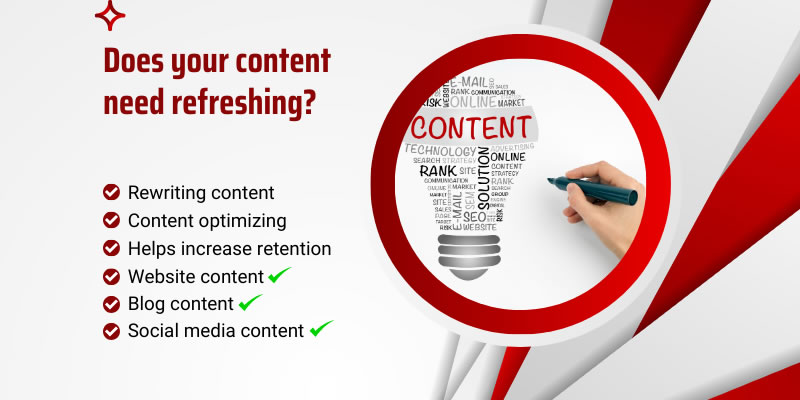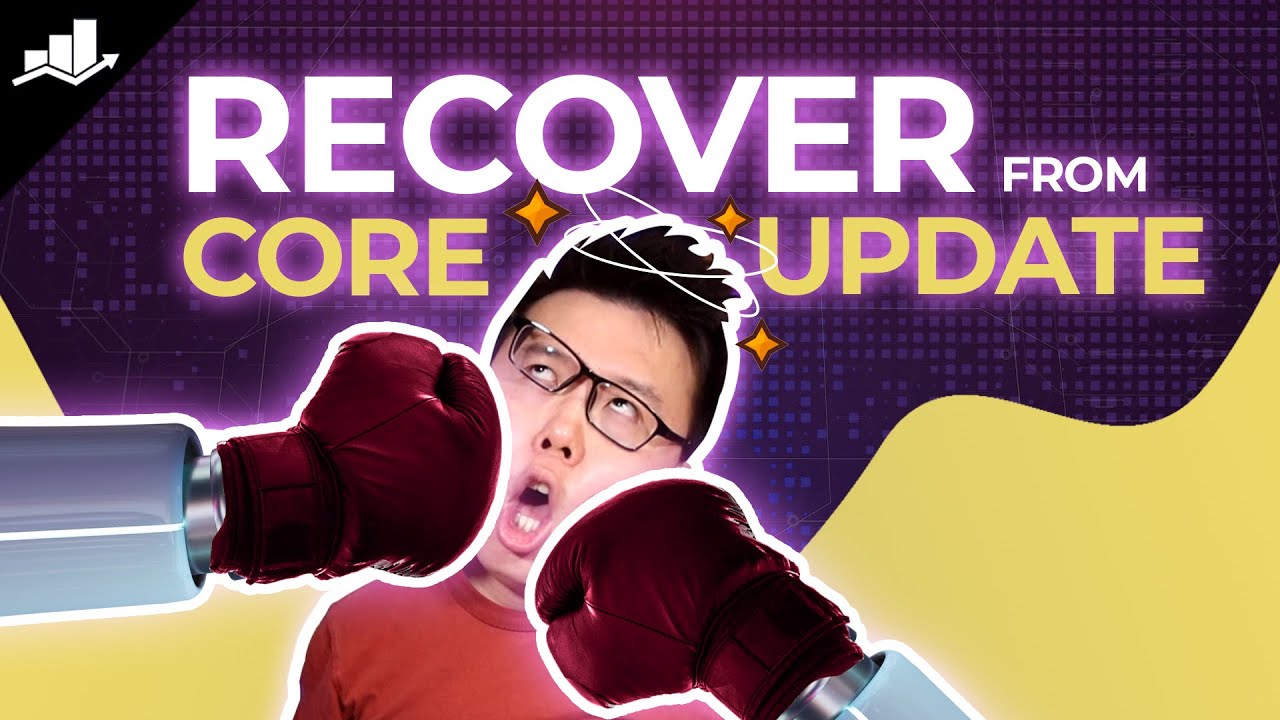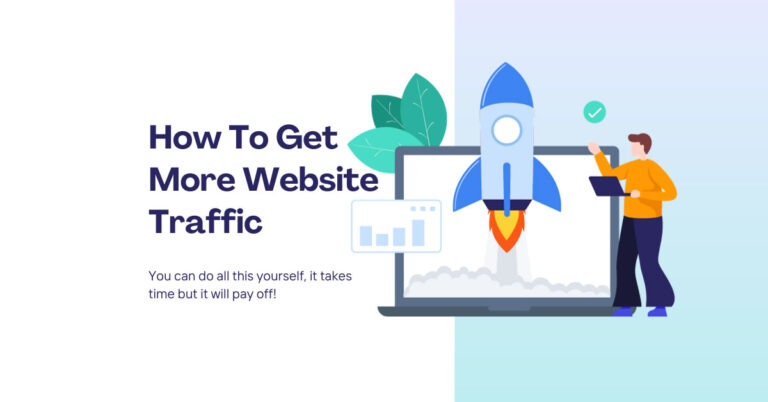Googles March Update – How To Recover
If the helpful content update last year was an uppercut, then the Core and the Spam updates in March are a knockout punch. But just because you’re down on the mat doesn’t mean that your fight is over.
We’ll uncover what Googles March update is looking for, and what you can do to recover from it.
Anyway, let’s first figure out what this Google search ranking algorithm update is all about. So this update is primarily targeting sites Google thinks are spammy and low quality.
Spammy Content
Googles March update includes what is known as spammy content. But what exactly does spammy and low quality mean?
Well, it says they want to reduce unoriginal content in search results, and they further explain that low-quality content means web pages that are unhelpful, have a poor user experience or feel like they were created for search engines instead of people.
This could include sites created primarily to match very specific search queries. We will go more in-depth about this in a while, but it is interesting that it includes poor user experience in the context of low quality and unoriginal results.
Then it went on to say that their spam policies keep the lowest quality content out of search, like expired websites repurposed as spam repositories, buy new owners, and obituary spam.
They define spam as sites that generate content at scale where a clear automation was involved. And the key to identifying spam is its abusive behaviour.
Spammy content has never been popular online but with Googles March update, its being downgraded.

Meaning if you have published godlike numbers of articles every single day, maybe 100 to a thousand articles in a day, it doesn’t matter if it is fully automated, created by humans or a combination. I think they look at the frequency and the quality of the content collectively.
Site Reputation
Then site reputation abuse is targeting those sites who pay money to be featured on reputable sites like the New York Times, Forbes or whatever, and reputable sites that do not pay attention to this policy notice will be affected by the upcoming update.
Going heavily against Googles March update.
This serves as a warning from Googles March update. And finally, those who bought expired domains that have some form of authority and they use it for things like LinkFarm, ContentFarm, PBNs, or whatever.
This is called expired domain abuse, or scaled content abuse site reputation.
Sure, those sites will be affected by this update as well. So if you have been sneaky and got away with all the previous updates, you will most likely get caught this time. If not, the next time.
You know who you are. But there are people who genuinely follow Google’s guidelines and work hard on their sites, yet they were also affected by this update.
What gives? Now, I’ll be honest with you, we do not have a definite answer on how to recover from this. We have to try and work out Googles March update as they never give anything away.
In fact, nobody does. And the things I’m about to mention might sound easy, yet they can be tedious to implement. However, after gathering everything that we have learned, these are the tips to recover from this update.
Popup Ads
Another target of Googles March update. If you have signed up with some ad management platform like Ezoic, Mediavine, or whatever, They will have some easy way for you to automatically optimize your sites with ads so that you will make the most money, right?
As a site visitor, you will feel uncomfortable avoiding those ads on websites that cause a poor user experience. According to Googles March update, Google generally wants your pages to be clean and suited to the eye, so you may want to take control over the placement of the displayed ads.
Maybe do not have any pop-ups and remove any ads that play catch with your site visitors. What I mean by internal links with intent is this. Let’s say someone searched for online jobs for seniors, and I wrote a long list of online job ideas I think seniors can do.
As a content creator, I think I’ve fulfilled the primary search intent, right? And if I just stop there without providing any additional help.
That person would just leave because they got the ideas. But for that person, does the intent stop at just the ideas? No, right?
That person actually wants to find an online job. That’s the underlying reason they are searching for that keyword.
So if your content simply stops at just satisfying the primary search intent of the keyword, which is the job ideas, without providing any additional information that can help the person’s underlying concern, it can be deemed unhelpful and goes against Googles March update.
To navigate that, you should work on adding internal or external links that will help the person’s underlying concern if it didn’t help in the page content itself.
I hope this makes sense.
AI Content
If you want to survive Googles March update and you have been churning out AI content without fact-checking or adding any new human input, it’s time to take a step back and rethink your strategy.
Google already said that using AI to create content is fine, and is accepted by Googles March update, but what they are not happy with is if the generated content is low quality or worse, spammy.
So it really depends on the source of information in your blog post. It is best that you contact your own original research and use that AI to write the content that includes that data.
For example, if the search term is the best AI image generator. Instead of relying on information from other blogs, like if blog one says, A, B, C is good, blog two says, D, E, F is better, and you aggregate them saying that A, B, C, D, E, F are good.
Instead of doing that, you should actually go and do actual research by testing them, hopefully on a video, to show people the prompts that you have used.
Did the AI understand all the prompts that you provided? Did it generate images that you would have expected?
Do it on all the available AI image generators and show the genuity of your research, where you can confidently say that this is the list of the best AI image generators.
And since you have already gotten the test results, you can instruct, for example, Content AI to write the text for you and give it specific instructions like this so that the speed of your content creation will be expedited.
So stop using AI like a content factory. If you want, try to think of a way to set up a research factory instead.
Now, even with original research, every product or service on the market will evolve over time, and new products and new services will be added from time to time as well.
I guess this is where many people get caught in this update because they thought that their content had been ranking at the top, which could mean that it was the most relevant and updated result at that time.
When we are at the top, sometimes we can become complacent and we let our ego take over. And when things go south, we blame it on someone else. I’ve been on that path.
I know that feeling. We are the only human. But when we humbly buckle down and reassess our content, we’ll definitely find some outdated or irrelevant things that would have been legit in the past.
For example, before a flood of AI tools came into the market if you were ranking at the top for the keyword, how to use AI to write content, the search intent would have been informational, where you would guide people to assess an AI system.
That would have been a difficult and complicated step-by-step guide.
But fast forward to now, with Googles March update, the step-by-step guide you would have written would have been outdated very quickly. So if you are in this situation, maybe you were too focused on creating new content while neglecting past written content, calm down and focus on what’s important.
Identify those outdated content. Compare what’s ranking at the top right now with your content and assess if your content is still relevant and updated? If not, it’s time to buckle down and do the work.
If you need help with identifying, prioritizing, and updating your content, I recommend that you check out this video.
Updating Content Regular
But a general rule is that every piece of content on your site should be updated at least once every 12 months. The day when you can fully rely on SEO as the only source of traffic, it’s over. In fact, it should have never been the case. It is not only SEO.
If you rely on any one source of traffic, be it Facebook, Instagram, YouTube, or whatever, you are bound to get trapped if any of those platforms decide to do something drastic.
It happened to many people in the past, and only those who understand that having multiple sources of traffic and building a loyal list of email subscribers is the way to build a sustainable online business.
On top of that, if you create your content on many different platforms, not only do you get more exposure, you will also gain authority. That’s where EEAT comes into play.
Domain Authority – DA
Domain authority does not only come from assessing backlinks from blogs, but Google also considers other social signals, especially in niches such as health and finance. Authority is crucial. I said this before in other videos.

Comparing two doctors with the same qualities, this doctor has more exposure on medical blogs, YouTube or whatever, and seems to be a trustable figure, and the other doctor is not known to the public. When both of them made the same statement, who would you trust more?
I’m pretty sure it is this doctor, right? The same logic applies to SEO.
So if you want to build authority, appear everywhere online. So if you have been running an online business for a long time, you would understand what I mean.
For those of you who are new to running a blog or an online business, SEO is a great source of traffic, but you need to hedge the risk of a rug pool with other traffic sources. I think it is time to play their game. (Googles March Core Update).
If you have not tried running any Google ads, I think you should try it. But do it on those pieces of content that will bring sales and revenue to your business. In other words, pieces of content that target commercial search intent. Don’t run ads for the sake of getting traffic.
The content that you wrote for organic rankings must be tweaked to be a little more sales-focused. Don’t run ads to the content that was written for organic traffic.
You’ll probably lose money if you do that. The important thing is to run profitable ads. Always monitor the stats and tweak your content so that for every dollar spent on ads, you get a positive return on your investment.
It is easier said than done. Try and use paid traffic to build an email list as well. So yeah, I hope these tips will be helpful to you, and I hope they will eventually help your site recover.
Traffic Dropped & Recovered?
If you have experienced this traffic drop and you have recovered, do let us know how you do it in the comments. Hope you can give us a thumbs up, and if you haven’t subscribed to us, be sure to do so to keep yourself updated with the latest on SEO and AI.
This is Jack from Rank Math. I’ll see you in the next video. Maybe more about Googles March update!
Read More: UK Web Design 2024 – UI Design Trends for 2024
Some Previous Core Updates
Google’s core updates are seismic shifts in the digital landscape, often shrouded in mystery and speculation. They have the power to propel websites to the zenith of search engine results pages (SERPs) or cast them into the abyss of obscurity.
These updates are Google’s way of refining its search algorithms, aiming to provide users with the most relevant and high-quality content possible. Over the years, several core updates have reshaped the SEO landscape, each with its own nuances and impact.
One of the most notable updates in recent memory is the BERT update, which rolled out in October 2019. BERT stands for Bidirectional Encoder Representations from Transformers, and it represents a significant leap forward in Google’s understanding of natural language processing (NLP).
Unlike previous updates that primarily focused on keywords and phrases, BERT aimed to comprehend the context of words within sentences, leading to more accurate search results.
This update forced content creators to prioritize user intent and semantic relevance over keyword stuffing, heralding a new era of content optimization.
Prior to BERT, the Medic update in August 2018 sent shockwaves through the SEO community, particularly impacting websites in the health and wellness niche.
Named for its perceived focus on medical and health-related sites, Medic underscored Google’s commitment to prioritizing expertise, authoritativeness, and trustworthiness (E-A-T) in its search rankings.
Websites lacking credible content from qualified sources saw a significant drop in visibility, prompting a scramble to improve E-A-T signals through robust content strategies and authoritative backlinks.
Before Medic, the March 2018 Core Update rattled the SEO landscape with its broad-reaching effects on search rankings.
Unlike targeted updates, such as Panda and Penguin, which focused on specific aspects of content quality and link building, the March 2018 Core
Update caused significant volatility across various niches. Some websites experienced dramatic improvements in visibility, while others plummeted in the rankings, sparking debates about the update’s criteria and implications for SEO best practices.
Further back, the Mobilegeddon update in April 2015 served as a wake-up call for website owners to prioritize mobile optimization or face the consequences of diminished visibility in mobile search results.
With the proliferation of smartphones and tablets, Google recognized the importance of delivering a seamless browsing experience across all devices.
Mobilegeddon incentivized website owners to adopt responsive design, improve page loading speed, and optimize for mobile user experience to maintain their rankings in mobile search.
The Penguin update, first unleashed in April 2012 and subsequently iterated upon, targeted webspam tactics such as keyword stuffing and manipulative link building.
Websites engaging in black hat SEO techniques saw their rankings plummet, while those adhering to Google’s guidelines reaped the rewards of higher visibility. Penguin’s emphasis on natural link profiles and quality content laid the groundwork for a more equitable and user-centric approach to SEO.
In the ever-evolving landscape of search engine optimization, Google’s core updates serve as catalysts for change, pushing website owners and digital marketers to adapt their strategies to meet the evolving demands of search algorithms.
While each update brings its own set of challenges and opportunities, one constant remains: the importance of providing valuable, relevant, and trustworthy content to users.
By staying abreast of Google’s core updates and adhering to best practices, website owners can navigate the turbulent waters of SEO with confidence and resilience.







